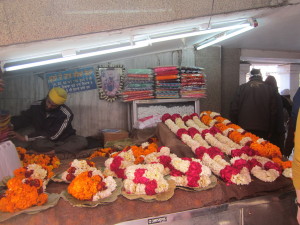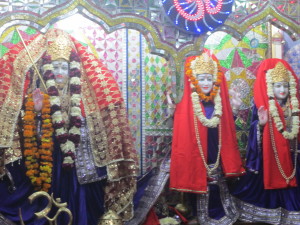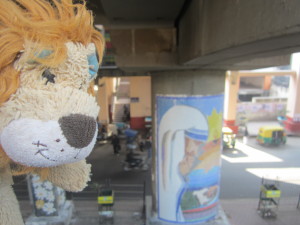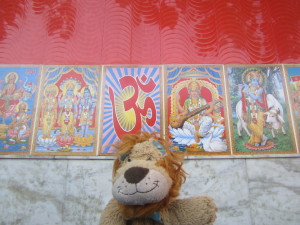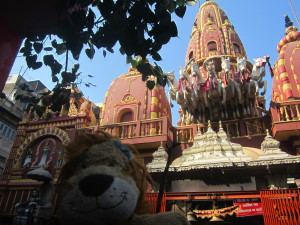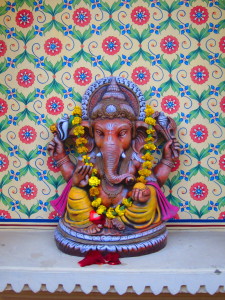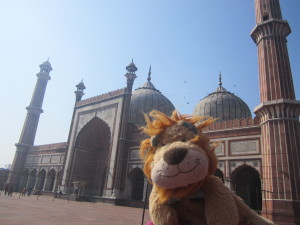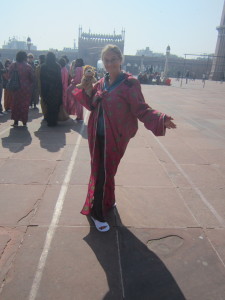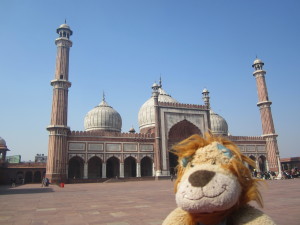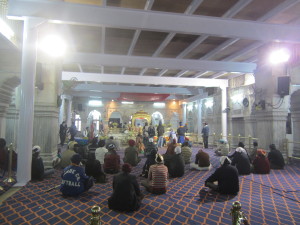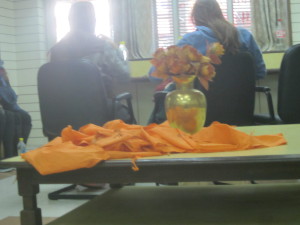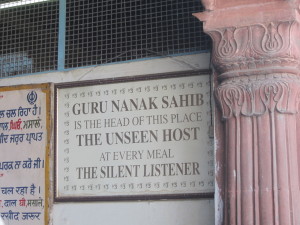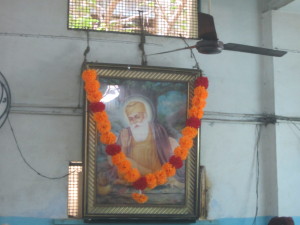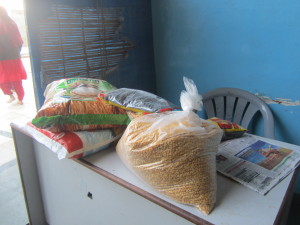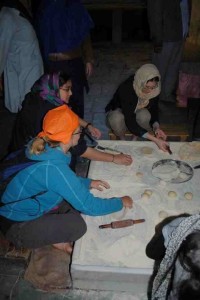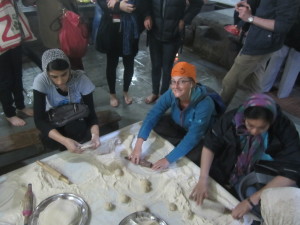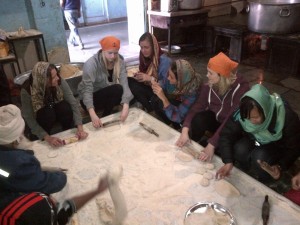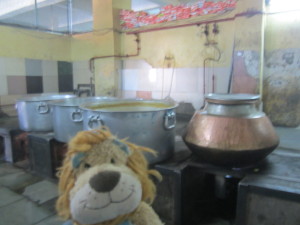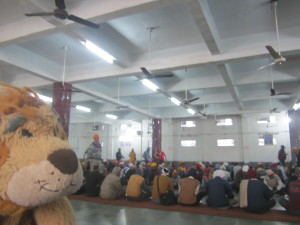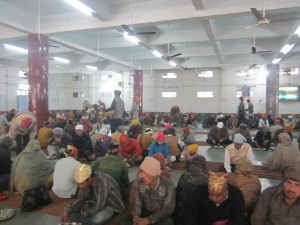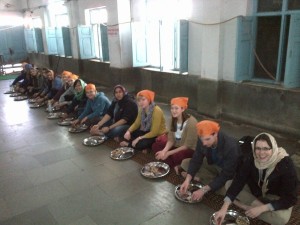One thing that you couldn’t miss in New Delhi was the very present spiritual heritage of the place. Four of the world’s main religions live harmoniously side by side in this vast nation: Hinduism, Sikhism, Christianity and Islam. Temples, gurdwaras, churches, mosques and shrines can be found on every street corner. Flower sellers also line the streets as passers-by pick up garlands of carnations as offerings at shrines and temples.
The smell of incense often permeates the air as it wafts through the open doors of these places of worship.
On Lewis the Lion’s first morning of exploration through New Delhi, he was mesmerised by the colour and vibrancy these spiritual practices brought to the city. First of all there were the huge paintings and statues adorning the city streets. He recognised one straight away. It was a portrait of Mother Teresa as he looked over the road network from a metro station bridge.
Mother Teresa was a Christian nun who gave up everything to look after the homeless of Calcutta and inspired many people the world over for her humility.
What else can you find out about this inspirational person?
He then past by brightly coloured paintings of some of the Hindu gods and goddesses.
Hinduism is perhaps one of the world’s oldest religions and Lewis the Lion was fascinated by some of the stories associated with it. The image that stuck out for him was that of the elephant god, Lord Ganesh. He’s noticed his image around the city and notably in statue form in many of the hotel lobbies. This is because he represents wealth and prosperity, especially if you rub his fat belly!
Weaving through the back streets of Old Delhi, through Chandni Chowk (one of India’s oldest and busiest markets), Lewis the Lion was then delighted to come across the imposing Masjid-i-Jahan Numa (meaning “mosque commanding a view of the world”). It is more commonly called the Jama Masjid (referring to its Friday congregation) or the Great Mosque and is a special place of worship for Muslims. It was commissioned by the Mughal Emperor Shah Jahan and completed in the year 1656. Indeed it is the most well-known and largest mosque in India and its courtyard alone can hold up to twenty-five thousand worshippers!
The first thing that Helen had to do on entering the mosque was to take off her shoes and replace them with some slippers and wear a full-length tunic so as to completely cover up, in spite of already being covered from head to toe! However, seeing as they were entering a holy place she felt that it was only respectful to follow the rules.
Lewis the Lion learnt that this mosque houses several relics, including a priceless copy of the Qur’an written on deer skin. However, more than anything, he simply enjoyed wandering around the courtyard taking in the magnificent view of the architecture around him as well as the sunshine. This was a very peaceful place and he enjoyed watching people sit by the fountains in the middle of the courtyard.
Next on the group’s itinerary for the day was to visit another place of worship, only this time it was a much more practical, hands-on experience as they headed to the Gurdwara SisGanj – the Sikh temple.
Lewis the Lion simply loved this place and his experience there. He felt like there was a true sense of community as anyone off the street could go in there and enjoy a meal. For many of the poor people in India, Lewis the Lion realised what an important gesture that was.
First things first, the group had to remove their shoes and cover their head with an orange cloth before entering the Gurdwara itself.
Lewis the Lion learnt that this site was a holy place for Sikhs as it’s where the ninth Sikh Guru (spiritual leader), Guru Tegh Bahadur, was beheaded in 1675 on the orders of the Mughal emperor Aurangzeb for refusing to accept Islam. His son, Guru Gobind Singh was the tenth and last Sikh Guru.
The group first entered into a room where prayer were being said and hymns were being sung above the former dwelling place of Guru Tegh Bahadur. They then filed past this holy room on the way to the community kitchen. There was great reverence for this from his worshippers.
As the group entered the community kitchen they could see that many people come to offer food and money donations to the temple so that all can enjoy a meal.
But people do not only just give the food to the temple, they also help in its preparation and so Lewis the Lion and his friends also got stuck in with helping to prepare food. They started off by rolling out dough balls into rotis using rolling pins, before they were then baked.
Lewis the Lion could see huge vats of dhal (lentils) which would be served to the masses.
There were many people in the temple, each involved with preparing something different to go towards the communal meal. Eventually, the group entered the dining area where they sat in rows on the floor.
They were then given a silver tray and various helpers in the temple came and served them a great variety of food: chapatis, rotis, dhal curries, vegetables and so on.
They could eat as much as they wanted as seconds were served. Nobody would leave hungry, that’s for sure!
Lewis the Lion was deeply touched by this experience of communal generosity. He felt that here, people were truly living out their faith and he felt very privileged to have been a part of that on that afternoon in New Delhi. A proverb came into his head, “Many hands make light work,” and he realised what a huge contribution everybody at the gurdwara was making to the benefit of everybody in New Delhi.
Which faiths do you regularly encounter in your life?
How do you show generosity to your fellow-man?

